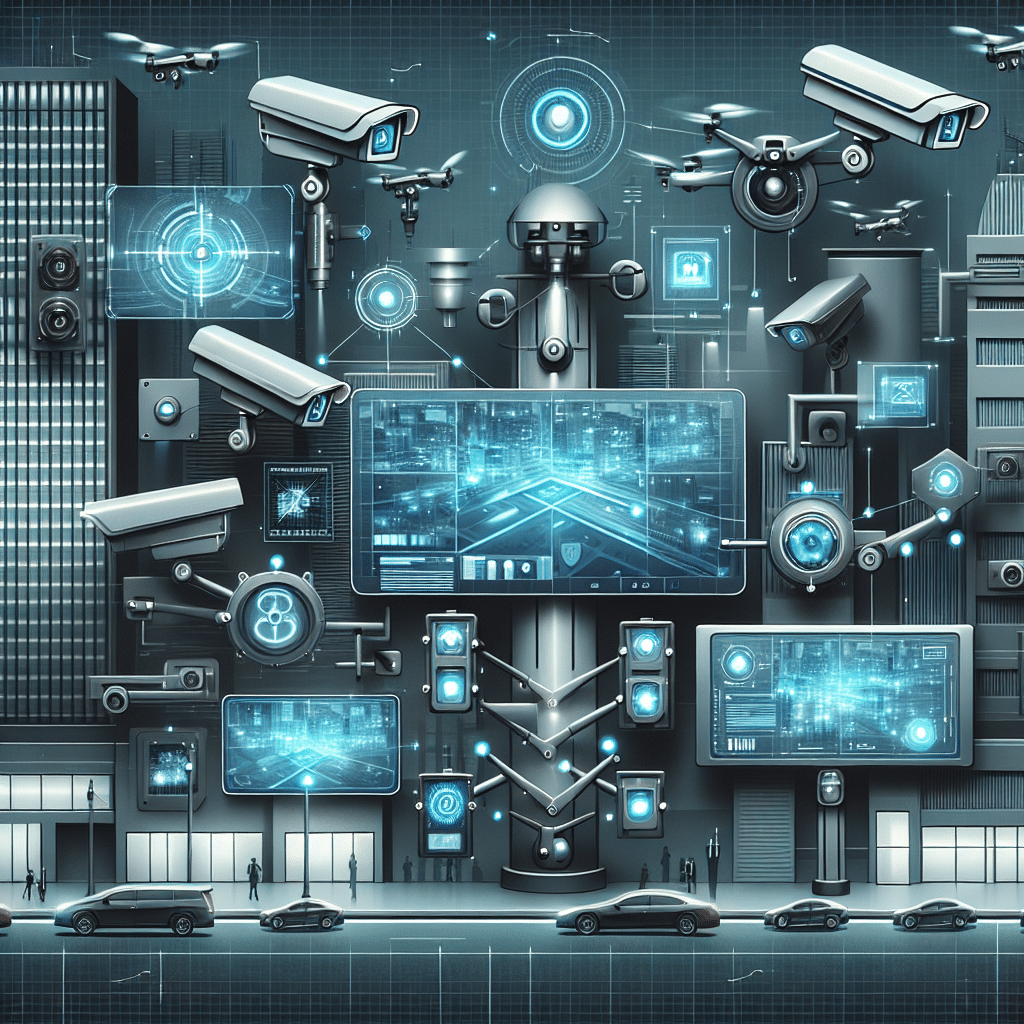The Evolution of Smart Surveillance Systems in 2025
1. Defining Smart Surveillance Systems
Smart surveillance systems combine advanced technologies such as artificial intelligence (AI), machine learning, and the Internet of Things (IoT) to enhance security and monitoring capabilities. These systems are designed to provide real-time analytics, automate response mechanisms, and improve situational awareness for businesses and communities.
2. Key Features of 2025 Smart Surveillance Systems
2.1 AI-Powered Cameras
In 2025, smart surveillance systems will predominantly use AI-powered cameras. These cameras can analyze video feeds in real time, identifying unusual behavior and providing alerts. Facial recognition technology will continue to improve, increasing security in public places such as airports and shopping centers.
2.2 Advanced Analytics
Smart surveillance will utilize sophisticated data analytics to extract actionable insights from video footage. With capabilities like crowd detection, anomaly detection, and heat mapping, organizations can optimize operations and enhance security protocols effectively.
2.3 Integration with Smart Cities
As cities evolve into smart environments, surveillance systems will seamlessly integrate with other urban services. This integration allows for coordinated responses to emergencies, traffic management, and public safety initiatives, leading to significant cost savings and improved quality of life.
3. benefits of smart surveillance systems
3.1 Increased Security
By employing real-time monitoring and rapid response systems, smart surveillance significantly increases the security for businesses and residential areas. The use of AI to predict potential threats and deploy necessary actions can deter criminal activities.
3.2 Resource Optimization
Modern surveillance systems contribute to resource optimization. Businesses can analyze foot traffic in retail spaces to strategize staff allocation and product placement, while cities can track vehicle congestion to improve traffic light sequencing.
3.3 Privacy and Data Protection
With GDPR and other privacy regulations, 2025’s smart surveillance systems will prioritize data protection. Techniques such as video anonymization will help protect individuals’ identities while enabling effective monitoring.
4. Challenges Facing Smart Surveillance Systems in 2025
4.1 Data Privacy Concerns
The collection and storage of surveillance data raise significant privacy issues. Organizations must navigate legal frameworks and develop transparent policies to ensure compliance while maintaining user trust.
4.2 Cybersecurity Risks
As surveillance systems become more interconnected, they also become more susceptible to cyberattacks. In 2025, companies will need to deploy advanced cybersecurity measures, including encryption and multi-factor authentication, to safeguard sensitive data.
4.3 Public Perception
People’s perception of surveillance and privacy will continually evolve. To foster acceptance, organizations must engage in community discussions, educating the public about the benefits and safeguards surrounding smart surveillance systems.
5. Future Innovations in Smart Surveillance
5.1 Drone Surveillance
Advancements in drone technology may lead to enhanced surveillance capabilities, especially in large venues and public spaces. Drones equipped with AI can provide real-time aerial feeds, improving situational awareness for law enforcement during emergencies or crowd events.
5.2 Edge Computing
By processing data closer to where it is generated, edge computing can significantly reduce the lag time in video analytics. Expect 2025 surveillance systems to use edge devices, enabling real-time decision-making without relying extensively on cloud computing.
5.3 Enhanced Integration with Wearable Tech
Wearable devices equipped with surveillance capabilities are set to become mainstream. Security personnel can receive alerts directly on their devices, leading to faster reaction times and on-the-ground decision-making.
6. Vertical Applications of Smart Surveillance
6.1 Retail Security
Retail environments will harness smart surveillance for loss prevention and operational insights. Employing smart analytics to track consumer behavior can allow retailers to tailor their offerings effectively, contributing to enhanced customer experiences and increased sales.
6.2 Traffic Management
Intelligent traffic surveillance systems will monitor vehicle and pedestrian flows, helping to optimize traffic signals and reduce congestion. This will be essential in smart city implementations, contributing to urban development and sustainability.
6.3 Healthcare Facilities
In healthcare, smart surveillance can ensure safety for patients, staff, and visitors alike. The systems can monitor restricted areas, detect falls, or even look for irregular activities that may suggest unrest or emergencies.
7. The Role of Regulations in Shaping Smart Surveillance
7.1 Legislative Frameworks
Governments worldwide are increasing regulations surrounding digital privacy and data protection. In 2025, companies must remain compliant with national and international laws, necessitating an ongoing investment in privacy-focused technology and employee training.
7.2 Ethical Standards
Businesses implementing smart surveillance must uphold ethical standards in their use of technology. Implementing fairness in AI algorithms and conducting regular audits ensures that bias is minimized and social responsibility is maintained.
7.3 Public Transparency
Transparency in surveillance practices will be paramount. Organizations should make their policies publicly accessible and engage with community stakeholders to build trust and confidence in future systems.
8. Best Practices for Implementation
8.1 Comprehensive Risk Assessment
Organizations should undertake detailed risk assessments before deploying smart surveillance systems, identifying vulnerabilities and ensuring that appropriate measures are in place to mitigate potential threats.
8.2 Employee Training and Engagement
Investing in training programs for employees will help in recognizing the functionalities of smart surveillance systems. This enhances compliance with policies and creates a culture of security within the organization.
8.3 Regular System Audits
Conducting regular audits of surveillance systems will ensure compliance with legal standards and operational effectiveness. This proactive approach allows for the early detection of potential issues and reassessing the technology’s adaptability to meet evolving safety needs.
Key Takeaway
Smart surveillance systems in 2025 are poised to transform the landscape of security and public safety through advanced technologies and high data-driven insights. While challenges persist, such as privacy concerns and cybersecurity risks, the ongoing evolution in technology and regulatory frameworks will create a safer and more efficient environment for both businesses and communities.
